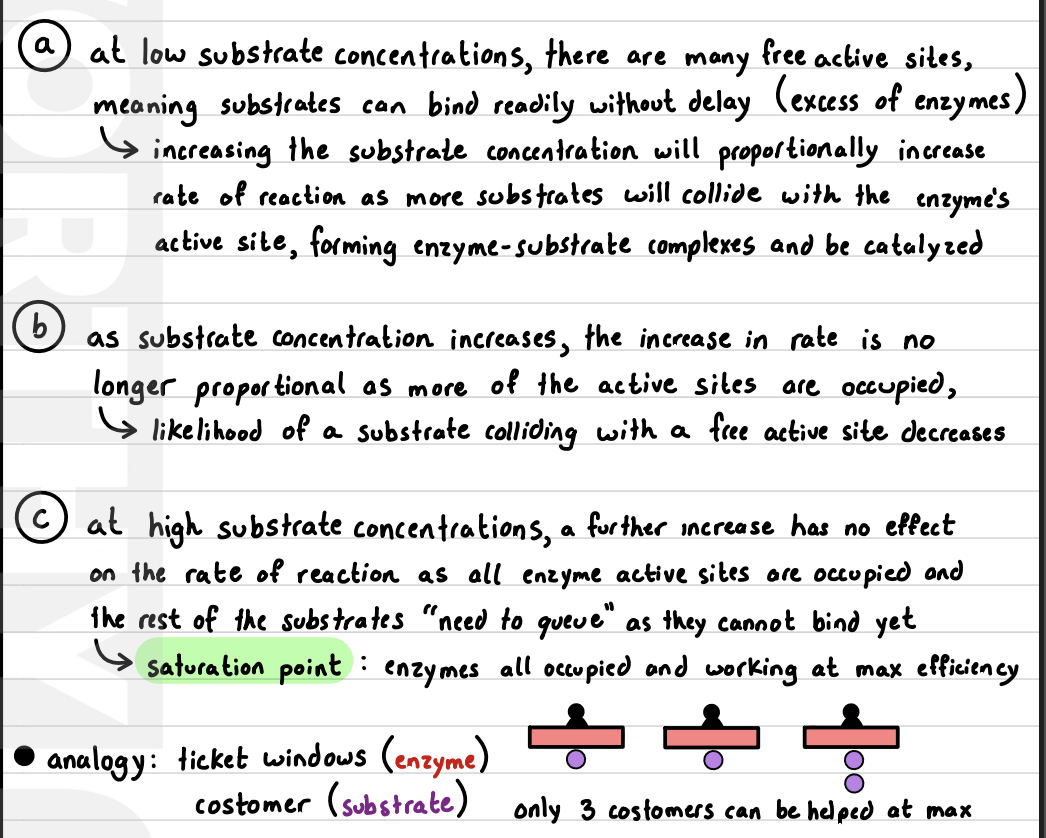c1.1 enzymes and metabolism
1/16
There's no tags or description
Looks like no tags are added yet.
Name | Mastery | Learn | Test | Matching | Spaced |
|---|
No study sessions yet.
17 Terms
for enzymes, what is the minimum amount of energy needed for a collision to occur?
activation energy
what is an enzyme?
an enzyme is a BIOLOGICAL CATALYST: increases the rate of reaction while remaining unchanged.
what is the shape of an enzyme?
it is a globular protein.
what is the induced fit model of enzyme action?
A substrate binds to an active site and both change shape slightly, creating an ideal fit for catalysis.
describe substrate-active site binding
when a substrate randomly moves close to the active site of an enzyme, its chemical properties draw it closer for correction orientation.
induced fit binding takes place
changes in the substrate during transformation into products weakens its bond.
the products disassociate and enzyme returns to original state.
what is metabolism?
metabolism: complex network of interdependent and interacting chemical reactions catalysed by enzymes that take place in organisms.
why are metabolic processes catalysed by enzymes?
it keeps the reactions regulated as a different enzyme is used for each reaction
energy can be used incrementally rather than all at once
what are the two types of metabolic reactions?
anabolic and catabolic
what is anabolism?
it is the synthesis of large, complex molecules from small, simple molecules.
condensation reactions
examples: nucleotides to DNA, amino acids to polypeptides, monosaccharides to polysaccharides
what is catabolism?
it is the breakdown of large, complex molecules into small, simple molecules
hydrolysis reactions
examples: digestion, oxidation of substrates in cell respiration.
comment on the energy of anabolic and catabolic reactions
anabolic reactions are endergonic: require an input of energy; products have more energy than reactants
catabolic reactions are exegornic: release energy; reactants have more energy than products
what are some factors that impact enzyme activity?
temperature
pH (too acidic or alkaline can cause the protein to denature, changing the shape of the active site)
substrate concentration

what is immobilisation?
immobilisation: the attachment of an enzyme to an inert, insoluble material.
what are some types of immobilisation?
absorption
covalent bonding
microencapsulation
cross linking
give an example of immobilisation
milk is poured down beads. the milk contains lactose however after it is poured down, the lactase is broken down into glucose and galactose—providing lactose-free milk.
what are 4 advantages of immobilisation?
enzymes can easily be used at high temperatures and concentrations (more stable)
enzymes can be easily seperated from the product and retrieved for re-use.
how are immobilised enzymes also used in key metabolic processes?
ATP synthase is an integral protein found on the membrane of chloroplasts and mitochondria: used for photosynthesis and cell respiration